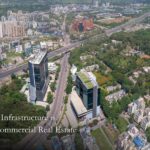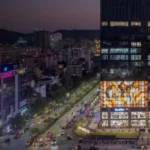5 Shifts Shaping Pune’s Commercial Story in 2025
- 07th July 2025
As we reach the halfway mark of 2025, Pune’s commercial real estate landscape has revealed some telling patterns – and promising signals. Here’s a quick pulse check on what’s shaping the city’s office space story.
1. The Rise of Grade-A Spaces
Pune saw the addition of nearly 5.5 million sq.ft of new office supply in the first half of 2025. Significantly, over 85% of this was in Grade-A developments, pointing to a market that’s not just growing, but also evolving in quality and sophistication. From large campuses to mid-sized boutique projects, demand is shifting toward smart, future-ready spaces.
2. Leasing Momentum is Back
With over 4.3 million sq.ft of office leasing already completed, Pune’s leasing activity has bounced back, approaching pre-2020 levels. This revival is driven by growing demand from IT, BFSI, and consulting sectors, alongside the increasing preference for tech-driven hybrid workplaces
3. Flex Gets Serious
Flexible office spaces now account for 15–20% of all leasing activity in the city. As occupiers look for agility in their footprint, operators are scaling rapidly, not just in traditional zones like Kalyani Nagar, Viman Nagar, Magarpatta, Kharadi, but in emerging micro-markets like Baner- Balewadi and Hinjewadi too.
4. Infra Projects = Office Growth
The ongoing expansion of metro rail lines, the proposed Pune Ring Road, and upgrades to arterial roads have made infrastructure a strong enabler of CRE growth. Micro-markets with better connectivity are witnessing improved leasing velocity and investor interest.
5. A Quiet Shift Toward Green
An increasing number of tenants are making sustainability a key criterion. This has pushed demand for IGBC-certified buildings, energy-efficient utilities, and amenities that support employee well-being. Green is no longer a ‘good to have’ – it’s becoming a business necessity.
The story of Pune’s office market in 2025 is not just about numbers – it’s about changing priorities. Spaces are evolving. Expectations are shifting. And developers who understand these nuances are quietly shaping the city’s commercial future.
Latest Post








